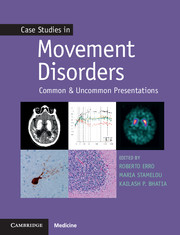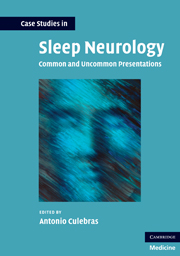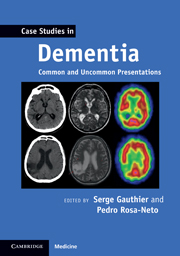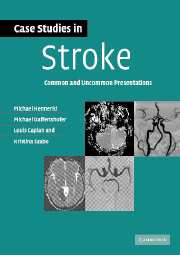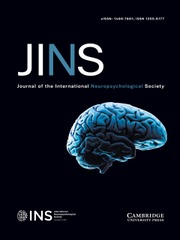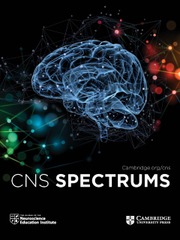Case Studies in Movement Disorders
Drawing on the expertise of an international team of authors, Case Studies in Movement Disorders is a compilation of illustrative cases, demonstrating a step-by-step approach to diagnosing and managing these complex conditions. An extensive collection of over sixty videos shows both common and uncommon presentations of a wide range of movement disorders, and the accompanying text guides readers systematically through the clinical history, examination and investigation findings, and diagnosis, and finally discusses the clinical issues raised. Both surgical and pharmacological management options are presented, helping readers understand some of the controversies involved in treatment. The cases are drawn from all of the major groups of movement disorders: ataxia, chorea, dystonia, myoclonus, parkinsonism, tics, and tremor. This will be invaluable for both neurologists in training and more experienced professionals seeking to develop their diagnostic skills, especially when faced with uncommon conditions or uncommon manifestations of common disorders.
- Draws on the experience of a global team of experts to cover a wide range of cases
- Illustrative videos are on an accompanying website, helping readers to effectively visualize the presenting symptoms
- The step by step approach to common and uncommon cases helps to build and reinforce diagnostic skills
Product details
June 2017Paperback
9781107472426
170 pages
245 × 190 × 10 mm
0.41kg
Available
Table of Contents
- List of contributors
- List of abbreviations
- Section 1. Parkinsonism:
- 1. Parkinson disease
- 2. Nonmotor Parkinson disease
- 3. Isolated lower limb dystonia at onset of Parkin disease
- 4. Parkinson's disease associated with SCNA mutations
- 5. Steele–Richardson–Olszewski syndrome
- 6. PSP-parkinsonism
- 7. Corticobasal degeneration
- 8. MSA – parkinsonian variant
- 9. Prominent freezing of gait and speech disturbances due to Fahr disease
- 10. A (familial) PSP look-alike
- 11. Parkinsonian syndrome and sunflower cataracts: Wilson's disease
- 12. Classic PD-like rest tremor in FTDP-17 due to a MAPT mutation
- 13. Progressive parkinsonism with falls and supranuclear gaze palsy
- 14. Very early onset parkinsonism
- 15. Parkinsonism due to CSF1R mutation
- Section 2. Dystonia:
- 16. Early-onset generalized dystonia: DYT1
- 17. Early-onset jerky dystonia: an uncommon phenotype of DYT1
- 18. Early-onset generalized dystonia with cranio-cervical involvement: DYT6
- 19. Autosomal recessive isolated generalized dystonia: DYT2
- 20. Dopa-responsive dystonia
- 21. A complicated dopa-responsive dystonia: tyrosine hydroxylase deficiency
- 22. Early onset generalized dystonia and macrocephaly: Glutaric Aciduria type 1
- 23. PKAN misdiagnosed as 'progressive delayed-onset postanoxic dystonia'
- 24. Oromandibular dystonia and freezing of gait: a novel presentation of neuroferritinopathy
- 25. Generalized dystonia with oromandibular involvement and self-mutilations: Lesch-Nyhan syndrome
- 26. Dystonia complicated by pyramidal signs, parkinsonism and cognitive impairment: HSP11
- 27. H-ABC syndrome
- 28. Dystonic opisthotonus
- 29. Delayed-onset dystonia after lightning strike
- Section 3. Tics:
- 30. Gilles de la Tourette syndrome
- 31. Secondary tic disorders: Huntington disease
- 32. Multiple hyperkinesias: tics and paroxysmal kinesigenic dyskinesia
- 33. Functional tic disorders
- Section 4. Chorea:
- 34. Huntington disease
- 35. Generalized chorea with oromandibular involvement and tongue biting
- 36. A Huntington disease look-alike: SCA17
- 37. A newly recognized HD-phenocopy associated with C9orf72 expansion
- 38. Persistent chorea due to anticholinergics in DYT6
- 39. Dyskinesia without levodopa: long-term follow-up of mesencephalic transplant in PD
- 40. Benign hereditary chorea
- 41. Another cause of benign hereditary chorea
- Section 5. Tremor:
- 42. Essential tremor
- 43. Rest tremor and scans without evidence of dopaminergic deficit (SWEDD)
- 44. Neuropathic tremor
- 45. A treatable disorder misdiagnosed as ET
- 46. Thalamic tremor
- 47. Shaking on standing: orthostatic tremor
- 48. Palatal tremor
- 49. Dystonic tremor and progressive ataxia
- 50. Bilateral Holmes tremor in multiple sclerosis
- 51. Primary writing tremor
- Section 6. Myoclonus:
- 52. A case of 'essential' myoclonus
- 53. Ramsey Hunt syndrome and Unverricht–Lundborg disease
- 54. North Sea myoclonus due to GOSR2 mutations
- 55. Ramsay Hunt syndrome and coeliac disease
- 56. Asymmetric myoclonus and apraxia: corticobasal syndromep
- 57. Rapidly progressive cognitive regression and myoclonus
- 58. Familial cortical 'tremor'
- 59. Prominent myoclonus and parkinsonism
- 60. Axial myoclonus of uncertain origin
- Section 7. Ataxia:
- 61. Slowly progressive unsteadiness and double vision
- 62. Cerebellar ataxia with urinary incontinence: MSA-C
- 63. Progressive ataxia, tremor, autonomic dysfunction and cognitive impairment
- 64. Sensory ataxic neuropathy with dysarthria and ophthalmoparesis (SANDO) syndrome
- 65. Ataxia telangiectasia without ataxia
- 66. Anti-Yo related ataxia misdiagnosed as multiple system atrophy
- 67. Late onset spinocerebellar ataxia
- 68. Ataxia with splenomegaly: Niemann–Pick disease type C.

